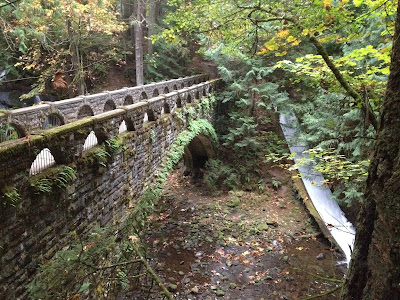Strava and the Death of Solitude
Social media is endemic to our society. The endless need to cultivate an
image has become embedded in our everyday routines as we exist in constant interaction, a network of
connectivity that enmeshes our lives. With the rise of the 'Internet of
Things' this network is penetrating ever deeper expanding ever wider into our activities. This includes running. The rise of GPS devices was a
game changer for outdoor activities. Given the metricized nature of running, a
sport that exists through the quantification of time, distance, and space, the allure of GPS was
inevitable.
Strava has been the most successful attempt at integrating social networking with GPS data. There were early attempts. Nike
had/has its Plus system. The Apple app store is filled with competitors. Every device
manufacturer has its own in-house network. But, Strava's system is pretty exemplary.
You can upload your activities, look at other people’s training runs, give and
receive encouragement, and most importantly, compare your efforts to those of
others.
Originally popular with cyclists, those wheeled custodians of disposable income, it has become increasingly popular with runners, particularly on the west coast. The website and mobile app have the sleek gloss of venture capital. The site is well managed with very few bugs. The site is visually appealing and populated with professional athletes. Their marketing department is talented: users who raced the 2013 Boston Marathon were sent a neat care package before the race. As social networks become more ubiquitous and ever larger, Strava is part of the growing 'niche' networks, sites designed for specific communities of shared interests.
Originally popular with cyclists, those wheeled custodians of disposable income, it has become increasingly popular with runners, particularly on the west coast. The website and mobile app have the sleek gloss of venture capital. The site is well managed with very few bugs. The site is visually appealing and populated with professional athletes. Their marketing department is talented: users who raced the 2013 Boston Marathon were sent a neat care package before the race. As social networks become more ubiquitous and ever larger, Strava is part of the growing 'niche' networks, sites designed for specific communities of shared interests.
A few years back, William Deresiewicz, essayist and former
professor of English at Yale, argued in the Chronicle for Higher Education that the culture of
connectivity was ending solitude. Technology is eroding our privacy
and concentration, but it is also removing our ability to be alone. Through
texts, tweets, updates, photos, kudos, yaks, pins, yelps, vines, and
check-ins, we are enmeshed in social life. The bustle for digital society
crowds out the subjective silence. The space in which we read, meditate, and think
about ourselves is shrinking.
This has changed us. As Deresiewicz points out, the contemporary self now aims toward a peculiar blend of connectivity and celebrity: ‘It wants to be recognized, wants to be connected: It wants to be visible. This is the quality that validates us, this is how we become real to ourselves – by being seen by others.’ So we are not just distracted. This digital creep is existential. For example, though I still over-share, I now try to maintain a more curated approach to what I say on the internet. But this curating worries me. As I’ve begun to think about what it is appropriate for me to say, post, or visualize on the Internet, I’ve begun to view the ‘real’ world through a reversed lens. Rather than judging social media by physical interaction, I’m starting to think about the physical world through categories of meaning crafted by digital spaces.
What we are losing, Deresiewiscz argues, is a sense of solitude. In an earlier world, people thought that you could not hear God when others were chattering at you. The banal twitter of everyday life obscured the voices that might be otherwise heard. So, monks and mystics retreated from the world into their cells. Secular society also valued solitude. Nineteenth-century Romantic philosophers and artists moved to cabins and slums to put some creative distance between themselves and society.
The American running boom of the 1970s and 1980s had this Romantic desire for solitude in its very DNA. While football and basketball stars were becoming millionaires, Prefontaine lived in a trailer in Oregon. Frank Shorter would log hundred-mile weeks in a definitively less-gentrified Boulder, Colorado. Amby Burfoot didn't even eat meat when he was logging 120-140 mile weeks in New England. Indeed, the fictional ideal of the distance runner, Quentin Cassidy, famously retreats to a rustic cabin in the Florida Panhandle. There he lives as a hermit and runs mythical workouts.
Would Pre be on Twitter?
The modern sport thus evolved as a solitary affair. There are few people who want to wake before 7am to log miles in the rain. Even fewer who are willing to pound out intervals or hill repeats before or after work. Alan Sillitoe famously called this ‘the loneliness of the long distance runner.’ In his short story about emotional escape from the social blight of midlands England, Sillitoe encapsulated running as a transgressive activity. He was right. There is an anti-social element of running. We skip happy hours, social dinners, and work related-schmoozing for the run. During a race there is a lactic void that nothing can fill. Of course running can and should be social and fun, but it is one of the few sports that rewards solitary training.
Until recently, running never aspired to celebrity. Its drama pales in comparison to soccer, football, and basketball. Generally the best guy wins and an informed crowd usually knows the handful of competitors with a shot of victory. This can be entertaining, but usually lacks the exciting contingency of other sports. In short, there are no miracles in running. So the sport draws an odd crowd of athletic outsiders: those who are either willing to work very hard for little compensation or those seeking some deeper aspect of the self.
After Colorado's upset victory at XC nationals in 2013, head coach Mark Wetmore stayed out off the podium and out of the limelight. Watching from the parking lot, he was "standing by himself with a bemused expression." Wetmore is a dying breed.
Yet Strava, with other social media, has killed this
loneliness. When you are running with Strava, you are running with digital
rivals, anyone who has trod the ground before you. These runs, immortalized as
GPX maps, haunt trails and roads like ghosts striding between that nebulous
divide of physical and digital reality.
Strava naturally and blatantly incentives competition. Much has been written about the problems of chasing after CRs and KOMs. Indeed, it is
very difficult to fight off the urge to accelerate and gain the coveted crown
for “Uphill Vomit Run” or “Grab Your Balls and Go” or “Counter-clockwise 0.21
mile loop around parking garage.” But critiquing Strava for its digital
competitions is unfair. If folks want to chase Strava
CRs, good on them. They certainly should. However such incentives are part of a
deeper problem in which Strava influences running more generally. With Strava
we can no longer run by ourselves. Solitude is impossible.
Prove it.
Let me elaborate. I live in a hilly part of Oakland. The
slopes are steep, the trails are windy, and the footing is uneven. I usually
average a minute slower on a run from home than when I run in the flattish areas
closer to the San Francisco Bay. This should not bother me, yet it does
immensely. Sometimes I dread looking through my Strava feed: Woah, Alex just
ran 6:12 pace for an easy twelve miles. My average was 8:23. Yikes, Tim and
David just demolished some hilly tempo efforts at 5:20 pace. I limped up the
firetrail at 7:35 pace. When I run now, I run with digital partners, an immanent comparison of effort
and fitness, that follows me for every step of my run.
It gets worse. Even when I run alone, I am running for an audience. With Strava I not only have to ‘prove it,’ I have to think about how
this run will be perceived. What was I thinking about when I was running? Will
that make a fun title for this run? Will folks chuckle or grimace if I entitle my
interval workout something snarky? If I upload this race will I get more
followers? Do I really want more followers? I worry about pace, distance, vertical
gain, and that damnable four-week mileage comparison between users.
With Strava, we run for others. “Wow, what a sunset.” Post it on Instagram. “Goodness, my legs feel great this morning.” Tackle that
hill and gain a crown. “Christ, what a tough week of mileage.” Take solace from
your weariness with an improved MTS standing. There is constant affirmation. Kudos
make you smile as they chirp in on your phone. Encouraging comments push you on
through the midweek slump.
These last bits are what makes Strava awesome. The greatest
benefit of social media is that it creates digital spaces for distant peoples of
similar interests and values. When someone from across the country leaves a
comment on my activities, it is literally energizing. Strava enables people to
meet and learn from other runners across the world. This is incredible, valuable, and fun.
But we are losing a propensity for introspection, that deep
mournful wonder about our selves in this world. Solitude gives one perspective with which to approach a changing world. As Deresiewiscz writes, solitude was a social mechanism of self-correction, ‘a way of burning
out the underbrush of moral habit and spiritual custom.’ For me, running
provides a distance with which I can better see the world around me in all its
messy irregularity. It is only when I go run in the hills and the forests that
the problems of the city present themselves. This distance is being collapsed
into the same digital immanence that is consuming the rest of our lives.
I might conclude with some sort exhortation for folks to
‘unplug.’ I might suggest you leave your GPS watch at home to try to rekindle some
sense of the loneliness of the long distance runner. But, that strikes me as
naïve and a bit tawdry. Asking people to avoid useful social tools is an attempt to put the toothpaste back in the tube. Life will become increasing
digitized. More devices will clamor for our attention. Western life will
continue to devolve into a buzzing, chiming, and blinking cacophony. But if you’ve read this far, and not swiped away
with your smartphone, I might suggest we at least be aware of solitude’s
decline.
Our children may never have the desire to be alone. So perhaps we
should endeavor to cultivate that sentiment while it still exists. Solitude
isn’t easy, and it isn’t for everyone. But neither is running.
Photo credit Joe Viger.











Nicely written
ReplyDeleteI couldn't agree more with your argument. We really are headed toward a future of more technology. Thanks for eloquently sharing your thoughts.
ReplyDeleteI'm glad I did the majority of my marathons/ultras when there was NO media other than talking about it (which I only did to other marathoners/ultra runners), and some actually wrote about their experiences in a local rag. I don't own a GPS, HRM, or keep track of my pace/mileage with anything other than a watch. This will be my 44th year of running road and trails and I really believe I never will need any of this! I run for competition, yes, but it's not the main reason I am out there.
ReplyDeleteP.S. I stil have a "flip" phone...all I need in "emergencies"!
ReplyDeleteReading(and writing) in the comments section only means we haven't had enough solitude lately, and can't think for ourselves...thinking of Dusty Olson.
ReplyDelete